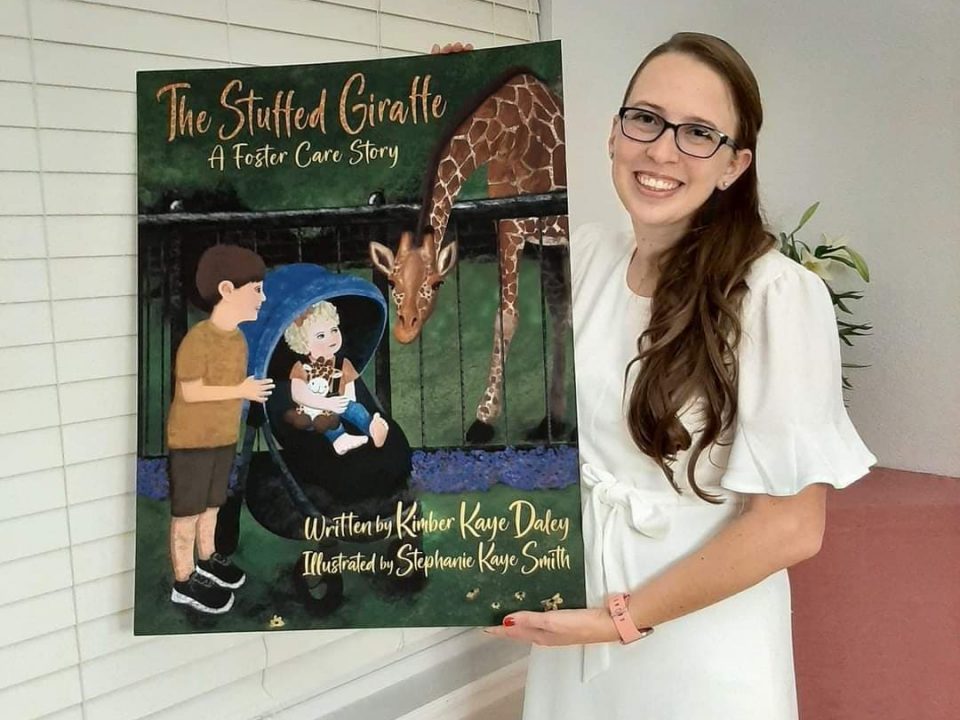
Parable of the Brown Girl: The Sacred Lives of Girls of Color by Khristi Lauren Adams
When you foster, you are likely welcoming into your family a child who is different from you. The child could have different experiences, be from a different socio-economic background, have different physical characteristics, or be a different race. How do you navigate, understand, and even celebrate these differences in a way that is encouraging and supportive to the child? Thinking about this question, I departed from my usual reading and reviewing books about foster care to check out Khristi Lauren Adams’s new release, Parable of a Brown Girl. While it isn’t a book about foster care specifically, it could be extremely helpful to a foster family, especially one who is not black and who is placed with a black girl.

“Parable of the Brown Girl explores the everyday lives of black girls and is written in a way that parallels some of the characteristics of the parables of the gospels,” as Adams says in the book’s introduction. Each chapter focuses on a stereotype people place on black girls, such as the “fass brown girl” or the “angry brown girl,” and each tells the story of a black girl who has struggled with an aspect of this stereotype. The experiences these girls have had range from disappointing to downright disturbing. As a black woman, Adams relates these experiences to her own, and she ends each chapter with spiritual truths found in Christianity that emphasize the universal humanity of these girls.
Reading this book, I felt sad to learn what these girls have had to endure. Some of the situations were obviously wrong and outrageous, like a coach calling a girl “Beefaroni” when he was weighing her, a pizza shop manager making suggestive comments to a girl, and a god-brother sexually molesting a girl, whose family didn’t believe her when she told. Other situations made me, a white woman, feel ashamed because I realized I could accidentally hurt a black girl through my ignorance. For example, Leah, a black girl dealing with an eating disorder, went to an intensive day treatment and outpatient program. Everyone there was white. When she expressed her discomfort over being different, her white therapist didn’t understand.
Leah said, “’Sometimes white people say ignorant things without meaning to. She was my therapist but she was also human and I understood that, but it didn’t help me.’”
She stopped going to therapy. The therapist probably never knew why, and I wondered how many other white people, including me, have inadvertently pushed black girls away when they needed our help. Fortunately, Adams didn’t berate white people or anyone else. Instead, she used stories from the Bible to give grace to the girls and to her readers, whatever their background. She talked about the imago Dei, how all humans are made in the image of God. Through this theology, she not only honored black girls, but she also celebrated the value of every human being.

Adams concluded the book by encouraging us to learn from black girls. She says, “Perhaps this is what God is doing with black girls—placing them in our lives to remind us to be as vulnerable, unprejudiced, adaptable, and benevolent as they are. To get closer to God, we must become like them and we must tend to their needs.”In Matthew 18:5, Jesus said, “’And whoever welcomes one such child in my name welcomes me.’” I believe anyone who welcomes a black girl—or a child of any gender or race—into his or her home is welcoming God, and I am grateful for books like Parable of a Brown Girl that can help us do a better job and be more sensitive to the children we are welcoming.
Read Debby’s thought-provoking interview with the author, Khristi Lauren Adams, to learn more about how you can celebrate the voices and experiences of people on the margins. And then pick up your own copy of Parable of the Brown Girl on Amazon because the narratives we ignore can often teach us the most important life lessons.



